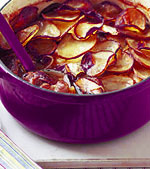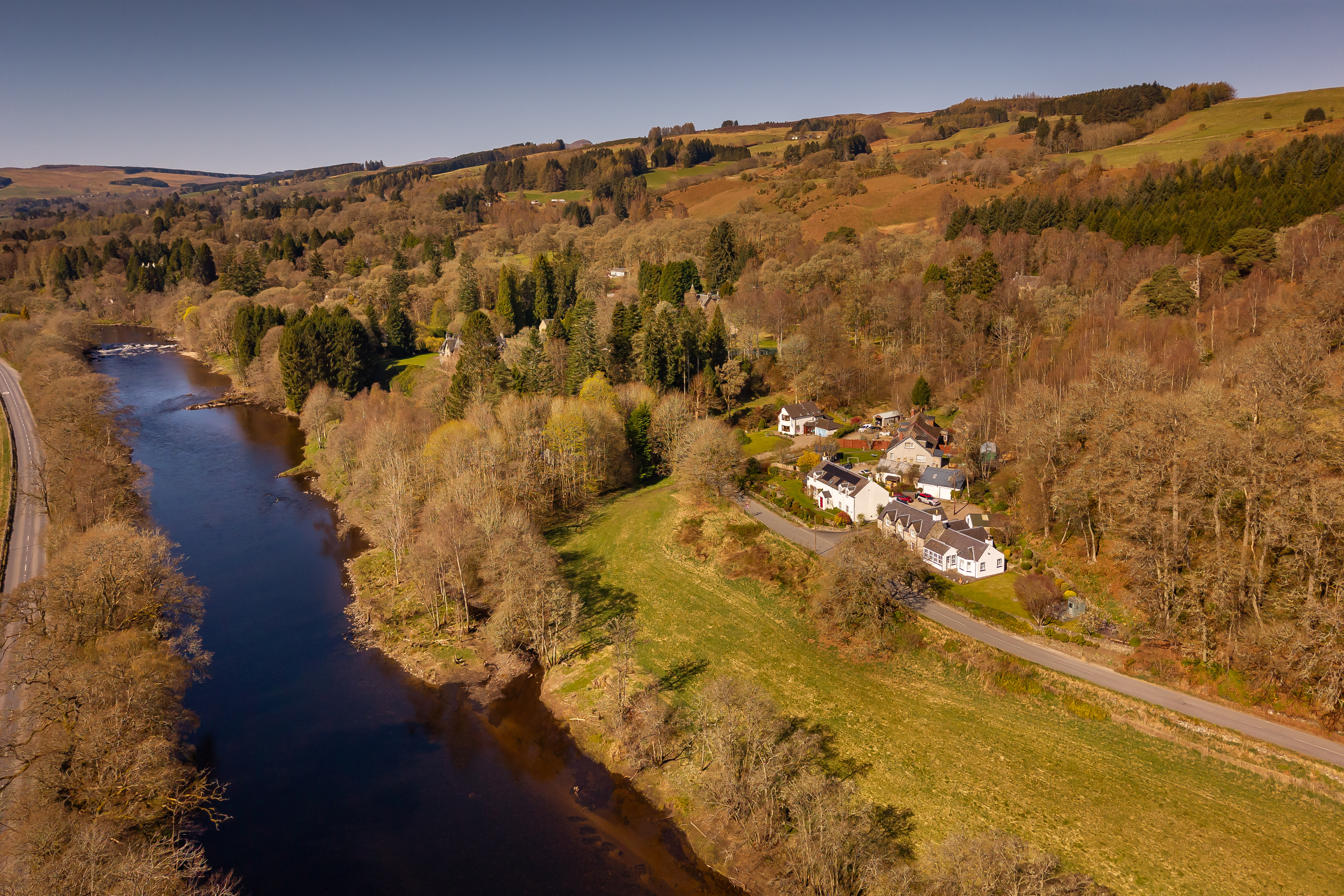Recipes for slow-cooked meats
You don't have to buy the finest cuts to get good flavour, says Mark Hix. Some not-so-common ones benefit from old-fashioned slow cooking


Braised oxtail with salsify
Serves 4
I learned to cook oxtail properly when I was a young commis chef at the Dorchester Hotel. It really is a top-class cut and full of flavour. Longish slow cooking is crucial you don’t want it completely falling off the bone, but, on the other hand, it must come away from the bone effortlessly. I bought a pressure cooker a couple of years ago, which is ideal for cuts like this, but the useless thing has broken, so I’m back to the old-fashioned pot-with-a-lid method or in the oven. Root vegetables, either mashed or roasted, are great with braises such as oxtail, but I’ve pulled out an oldie that doesn’t get grown much: salsify. It’s a bit messy to prepare, with its thick, black muddy skin, but has a great flavour and texture, rather parsnip-like, I suppose.
Ingredients
1½kg–2kg oxtail, cut into 2cm–3cm-thick pieces and trimmed of any excess fat 1 onion, peeled and roughly chopped 2 carrots, peeled and roughly chopped 2 sticks of celery, roughly chopped 2 cloves of garlic, peeled and crushed A few sprigs of thyme 60g butter, plus more for the salsify 50g flour, plus extra for dusting 2tspn tomato purée 100ml red wine 2 litres beef stock or a couple of good-quality stock cubes, dissolved in 2 litres of hot water 250g salsify, peeled and placed in water with a couple of squeezes of lemon juice (which keeps the colour) Half a lemon ½ tbsp chopped parsley Salt and freshly ground black pepper
Method
Preheat the oven to 220˚C/gas mark 7. Season the pieces of oxtail and lightly dust them with a tablespoon or so of flour. Roast them in the oven for 30 minutes, turning them halfway through to make sure they’re nicely coloured on both sides.
Sign up for the Country Life Newsletter
Exquisite houses, the beauty of Nature, and how to get the most from your life, straight to your inbox.
Meanwhile, heat the butter in an oven-proof saucepan or pressure cooker and cook the onion, carrot, celery, garlic and thyme for 3–4 minutes on a medium heat until lightly coloured, stirring every so often. Add the flour and tomato purée and stir well.
Gradually, add the red wine and stock, stirring well to avoid lumps forming, and bring to the boil. Add the pieces of oxtail and cook on the stove on the lowest heat, preferably on a simmering plate, for 1½–2 hours (or in the oven at 160˚C/gas mark 3). Check the meat after about an hour and a quarter (a pressure cooker will take about an hour). When it’s tender, remove it from the heat. Check the pieces of oxtail.
The meat should be easily removed from the bone; if not, replace the lid and cook for another 15 minutes or so. Tip the contents of the pan into a colander over a bowl and allow the sauce to drain through. Strain the sauce through a fine-meshed sieve into a saucepan, bring to a simmer and remove the fat from the surface with a ladle. If the sauce isn’t thick enough, continue simmering until it thickens, skimming every so often, then add the meat to the pan.
Meanwhile, slice the salsify on the slant into pieces about ½cm thick and bring them to the boil in the acidulated water that you’ve prepared them in, with an added teaspoon of salt.
Cook for 6–7 minutes until tender. Drain and mix with butter and parsley. Serve the salsify spooned over the oxtail with some buttery mashed potato on the side.
Mutton and turnip hot pot
I’ve been flying the mutton flag for some years now, and it’s still a bit of a struggle convincing people to use mutton for long, slow cooking instead of good lamb. There are lots of great mutton producers and we’re slowly seeing good butchers stocking mutton again. Just because it’s old lamb, it doesn’t mean it’s cheap don’t think you’re going to get too much of a bargain. What you do get, however, is a full flavour from mutton, almost gamey, and that’s what makes the difference. I love hot pots they’re great one-pot dishes and winter warmers well worth coming home to.
Ingredients
1kg–1.5kg mutton neck chops 6 lamb’s kidneys, halved (optional) Flour for dusting Vegetable oil for frying 60g unsalted butter, plus a little extra for brushing 1tspn chopped rosemary leaves 450g–500g onions, peeled and thinly sliced 800ml lamb or beef stock (a good-quality cube will do) 500g large potatoes, peeled and cut into ¼cm slices 500g large turnips, peeled and cut into ¼cm slices Salt and freshly ground black pepper
Method
Preheat the oven to 220˚C/gas mark 7. Season the chops and kidneys separately with salt and pepper and dust with flour. Heat a heavy-bottomed frying pan with a couple of tablespoons of vegetable oil, and fry the chops a few at a time on a high heat until nicely coloured. Then, drain in a colander. Fry and drain the kidneys afterwards, and set aside. Clean the pan and heat a couple of tablespoons of vegetable oil.
Fry the onions on a high heat until they begin to colour, add the butter and continue to cook for a few minutes until they soften. Dust the onions with a tablespoon of flour, stir well and gradually add the stock, stirring to avoid lumps, and sprinkle in the rosemary. Bring to the boil, season with salt and pepper and simmer for about 10 minutes.
Now you’re ready to assemble the pot. Take a deep ovenproof casserole dish with a lid or similar, cover the bottom with a layer of potatoes and turnips, followed by the meat with a little sauce, then the potatoes and turnips again. Continue until the meat and sauce have all been used.
Finish the top with a layer of turnips and, finally, nicely overlapping potato slices. Brush the top with a little of the sauce and cook in the oven for about half an hour on 220˚C/gas mark 7, and then turn the oven down to 140˚C/gas mark 1 and leave for two hours or until the meat is tender. Remove the lid and turn the oven back up to 220˚C/gas mark 7.
Brush the top with a little melted butter to allow the potatoes to brown.Serve with pickled red cabbage.
Country Life is unlike any other magazine: the only glossy weekly on the newsstand and the only magazine that has been guest-edited by HRH The King not once, but twice. It is a celebration of modern rural life and all its diverse joys and pleasures — that was first published in Queen Victoria's Diamond Jubilee year. Our eclectic mixture of witty and informative content — from the most up-to-date property news and commentary and a coveted glimpse inside some of the UK's best houses and gardens, to gardening, the arts and interior design, written by experts in their field — still cannot be found in print or online, anywhere else.
-
 Vertigo at Victoria Falls, a sunset surrounded by lions and swimming in the Nile: A journey from Cape Town to Cairo
Vertigo at Victoria Falls, a sunset surrounded by lions and swimming in the Nile: A journey from Cape Town to CairoWhy do we travel and who inspires us to do so? Chris Wallace went in search of answers on his own epic journey the length of Africa.
By Christopher Wallace
-
 A gorgeous Scottish cottage with contemporary interiors on the bonny banks of the River Tay
A gorgeous Scottish cottage with contemporary interiors on the bonny banks of the River TayCarnliath on the edge of Strathtay is a delightful family home set in sensational scenery.
By James Fisher